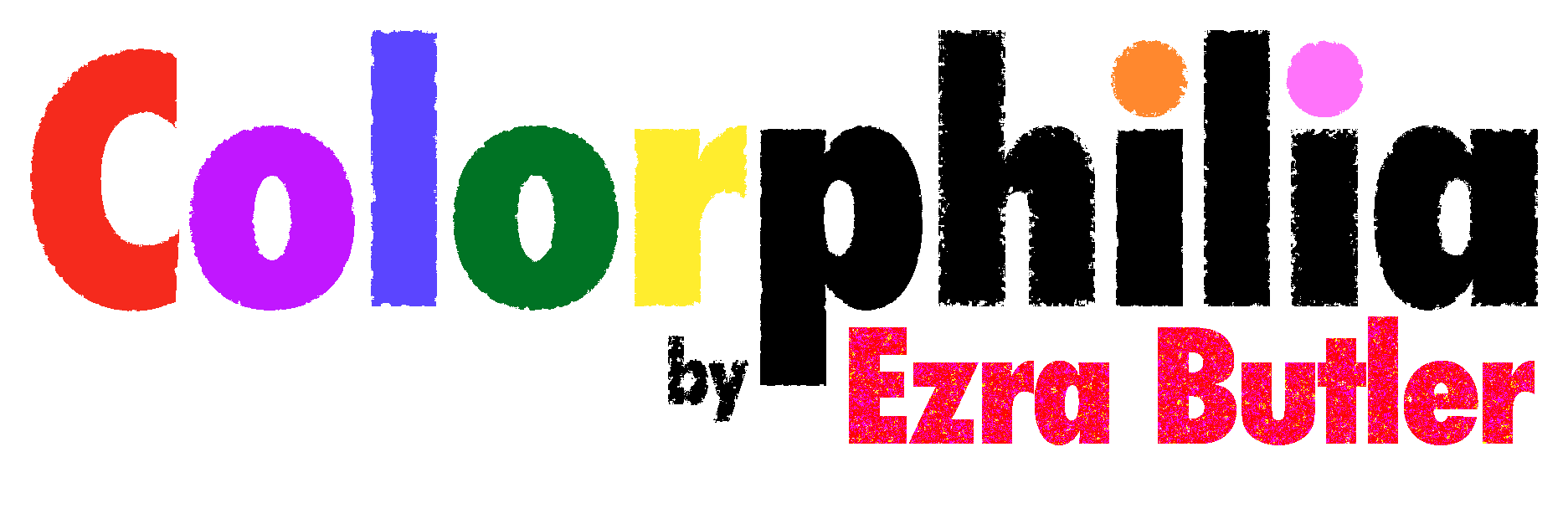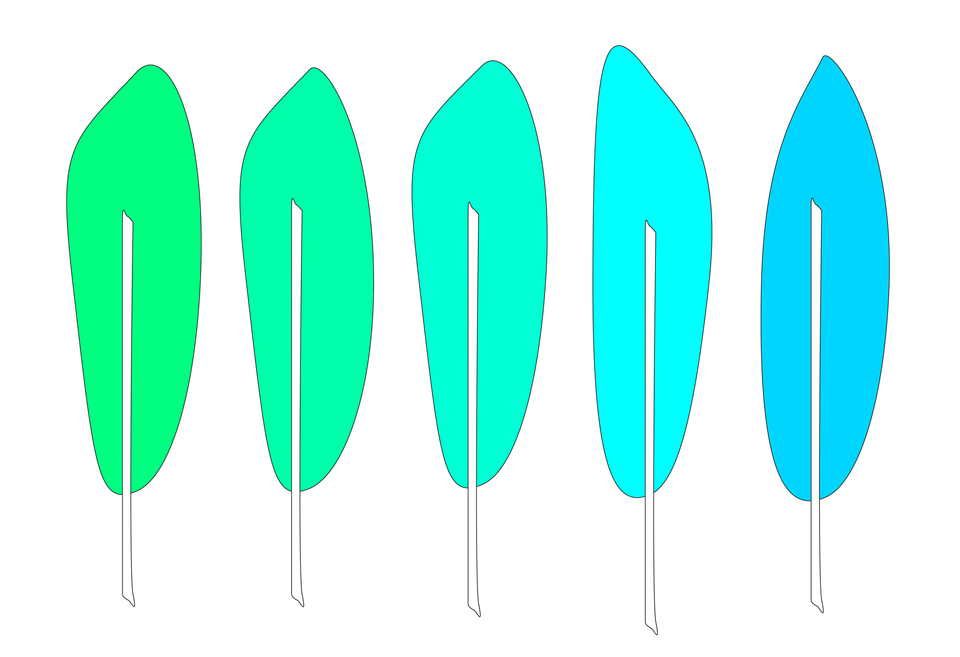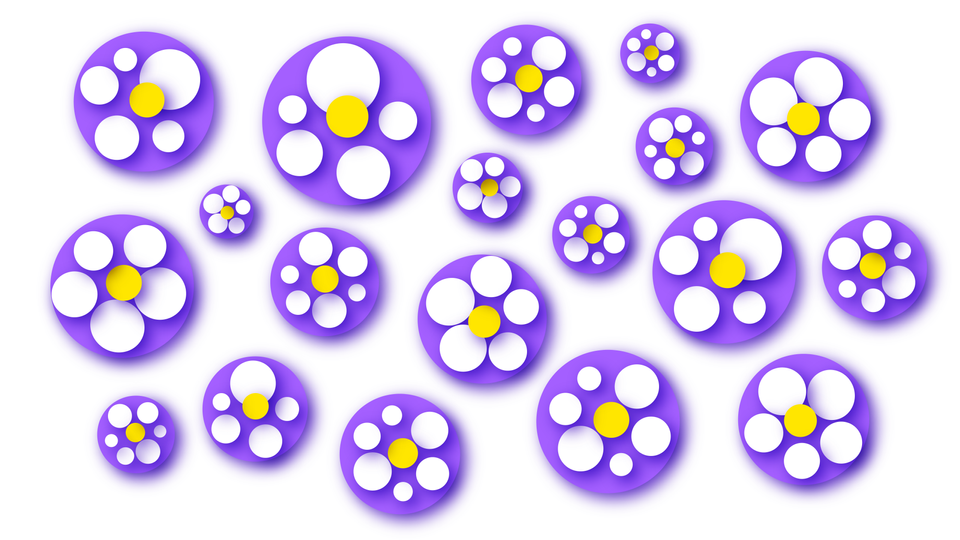Storytelling and Dreaming in Color
Scheherazade, Alice, Dorothy, and Wendy.

Before I began to write Colorphilia, I had been researching the etymologies of various concepts related to the color blue. During the course of that research, I came across a phrase twice in plays by Molière.
In L'ÉCOLE DES MARIS (The School for Husbands) and LE TARTUFFE (Tartuffe), Molière had characters refer to “les contes bleus”, or “blue stories”. I could not figure out what they meant. I could not find anyone before him who had ever used that phrase. I knew that it had to be so self-explanatory that any mid 17th century French theatre-goer would understand immediately what sort of story he was referring to, and my mind was heading towards the profane.
I was perhaps most confused by the fact that some people translated them as "fairy tales".
Tales of Folks and Fairies
Trying to figure this out led me down a rabbit hole about learning about the French folk tales printed by Charles Perrault in 1697, and the German folk tales printed by the Brothers Grimm in the early 19th century. Both had been in their respective language academies, and saw their responsibilities as creating either a French- and German-centric collection of stories.
I also learned about Madame D'Aulnoy and the creation of the “fairy tale” (contes des fées), with her publishing of “l'Oiseau bleu” or “the Blue Bird” (and other stories) also in 1697.
Persian Stories
One day, I came across an early 17th century text referring to “contes pers”, Persian stories, and everything immediately clicked for me. The characters in Molière’s plays had been either referring to people who were talking about neverending drivel or coming up with fantastical stories.
Shades of Bleu
Before “bleu” was the dominant way to refer to the color blue in French, they had a shade they referred to as “Pers” or “Pers bleu”, from Persian Blue. There was also a shade of blue called “Inde bleu” or “Inde”, which was Indian Blue, which we would call “India Ink”.
For various reasons, by the time of Molière, “Pers” was no longer used to refer to blue. This means that the characters were doing a bit of wordplay, with “bleu” replacing “pers”, even in cases where it had nothing to do with the color.
Scheherazade
The Persians were the original storytellers, and Scheherazade and the Thousand and One Nights included some of what we would refer to as the original fairy tales. As the story goes, the Persian king Shahryar is betrayed by his first wife and kills her, and whilst looking for a replacement, went through every virgin in the country, killing them after a single night when he was done with them.
He finally chooses Scheherazade, his vizier’s daughter, who would tease him with a story that she cut off with a cliffhanger at dawn every day, only to be continued the following night. The suspense caused the king to keep her alive, and after 1001 nights, he realized that he was in love with her and let her live.
Blue Stories
The concept of the “contes bleu” in French became associated with stories that began at night, starting with Scheherazade-like storytelling happening at bedtime, and ultimately continuing to refer to any fantastical boudoir-related narratives. One of the differences between these “blue stories” and “fairy tales”, was that fairy tales ultimately found their audience with children, while these blue stories were not intended for children in the slightest.
Dreams
I’ve recently discovered a whole body of psychological research questioning if we see color in dreams or if they happen in black and white. The question seems like a non-starter because more than 50% of long-form dreams in Freud’s Interpretations of Dreams, as well as many written by ancient writers have references to color.
One academic theory was that in the first half of the 20th century, because of the prevalence of black and white film, it seemed that people associated their dreams with what they saw on screen, thereby connecting it with black and white.
The format of the surveying was flawed. The questions were “do you dream in black and white or in color?” whereas subsequent researching 1962 would wake people during REM sleep and ask them to describe their dreams.
Dream Narratives
Dream narratives go back to antiquity, with various cultures using dreams to portend future events or prophesize. Within Scheherazade’s stories, she has many references to dreams, as do the Ancient Egyptians, the Greeks and Romans, the Assyrians, and even the Bible.
In fact, the term “Jacob’s Ladder” has been used to describe a genre of films in which you discover that the entire movie was, in fact, a dream.
Dream Worlds
Between 1865 and 1911, three books were published for children in English, referencing a new genre of fairy tale. Unlike earlier folk and fairy tales told about princesses and knights and magical gourds, these stories were told about normal contemporary children, just like their audience. All three begin in the real world, reference fantastical places which exist only in dreams, and finally return the protagonists to the real world.
The books “Alice’s Adventures in Wonderland”, “The Wonderful Wizard of Oz”, and “Peter and Wendy”, have become the equivalents of modern day myths, each spawning numerous books, films, plays, and other references in popular culture. (“Peter and Wendy” was first written by the same author as the play, “Peter Pan”.)
Color in Dream Worlds
At first thought, we think of all three of these books as bursting with references to color.
Alice encounters a white rabbit, a blue caterpillar, and sees a deck of cards painting white roses red. Dorothy begins in a grayscale Kansas, and wakes up in a colorful fantasy. And Neverland is a fantasy land where it describes flamingos flying over lagoons and lagoons flying over flamingos.
Color is so integral to the story of Dorothy and her friends, it was turned into one of the first mainstream movies filmed in Technicolor, and became a cult classic.
But after careful rereadings of all three books, Wonderland and Neverland actually have virtually no other color words used in the dream sections of the books.
“Peter and Wendy” begins with a description of Mrs. Darling getting married in white, and her wearing of white is referred to throughout the book. Michael is put into a pinafore with blue braiding. The book ends with a description of Wendy’s getting married in white, with a pink sash. Wendy recounts the colors of the fairies in Neverland to Mrs. Darling:
“and the mauve ones are boys and the white ones are girls, and the blue ones are just little sillies who are not sure what they are.”
Color in Neverland
But in Neverland itself, colors are more likely to describe race (white, red, black) than anything else. Color is semi-frequently mentioned as a concept, but not used to describe much of anything.
For example:
for the Neverland is always more or less an island, with astonishing splashes of colour here and there,
and
If you shut your eyes and are a lucky one, you may see at times a shapeless pool of lovely pale colours suspended in the darkness;
and
The bubbles of many colours made in rainbow water they treat as balls, hitting them gaily from one to another with their tails, and trying to keep them in the rainbow till they burst.
If anything, it is used metaphorically to describe Hook’s heart or mood. (It also mentions that he had blue eyes.)
Color in Wonderland
In Wonderland, colors would also be mentioned in conversation, like Alice describing the color of her dog or the Mock Turtle singing about the color of his soup. Even the White Rabbit is first described as a “white rabbit with pink eyes” before entering Wonderland, and then White Rabbit becomes its name, rather than a description.
Both books reference flamingos and mushrooms, yet don’t describe the colors of either. Considering that flamingo was the ancient Egyptian Hieroglyph for the color red, as is the suit of hearts in a deck of cards, but the word red (or pink) was not mentioned. The only color word associated with the Queen of Hearts is that she turns crimson when she’s angry.
Color in Oz
In the World of Oz, each demographic and region had its own dominant color.
Dorothy dressed in a white and blue gingham dress and had a pink sunbonnet tied to her head, but this mixing of colors was considered unusual.
Everything in the world of the Munchkins is blue. Not shades of blue like cerulean, sky, cobalt, and ultramarine, just blue. The Winkies were yellow. The Quadlings were red. There are other color references in each of these cases, like green grass and yellowing grain.
The only time we encounter a shade is with the red poppies which nearly kill Dorothy and the Lion, whose description goes between “scarlet” and “bright red”.
The only places where colors truly mix are in the between places like the forests and in the Dainty China Country.
Boq explains that white is the witch color, but we never see that color connected to the Wicked Witch of the West. Even the original illustration seems to show a mix of white and black. In fact, she uses (black) crows and black bees to attack Dorothy and friends. She has a silver whistle and a golden cap.
As colorful as the world of Oz is, the Wizard admits to Dorothy and friends that the Emerald City isn’t really green, he simply forces everyone to wear green colored glasses. Both the dress Dorothy receives while in the Emerald City, as well as Toto’s collar ribbon, turn out to be white.
Theoretical Populist Subtext about the Gold Standard
There is a theory of a subtext in the original story that is an allegory about the bimetalism debate in the United States around the turn of the century. The value of the dollar was based on the gold standard, so the value of silver was effectively tied to the value of gold. Populists wanted to create a dual gold and silver standard, which would have effectively raised the value of silver.
Dorothy’s original shoes were silver, and were only made ruby-colored in the movie, which was all about using Technicolor. So Dorothy’s silver shoes walked on the golden yellow brick road, and the green dollar really didn’t exist.
Functional Color Usage
In each of these stories, color is used in a deliberate functional manner, either used to differentiate groups or to further the narrative.
Obviously color exists in Alice’s Wonderland, but it is only mentioned when it’s unusual. A large blue caterpillar is both a sight to see, and not what one may ever expect to see when imagining a caterpillar. We immediately associate roses with red, so the idea that they were being painted red was a surprise.
In Dorothy’s Oz, we are treated to a world of disjointed primary colors, existing largely to the exclusion of all other colors, and a color whose sole purpose is to remind us that not everything is always as it appears.
And in Wendy's Neverland, color is mainly used as a descriptor to distinguish the inhabitants from one another, from a mainly racial perspective. But specific color was also somewhat irrelevant in the Neverland.
"What was the colour of Mother's eyes? Which was taller, Father or Mother? Was Mother blonde or brunette?”
Narration and Storytelling
Like the storytelling character of Scheherazade in the Thousand and One Nights, these stories also share a tone of the narrator, though we never know their name. In each, the narrator is the (apparent) adult who is explaining what our protagonists are thinking, remembering, or knowing.
The narrator explains on the following page:
By the way, the questions were all written in the past tense. What was the colour of Mother's eyes, and so on. Wendy, you see, had been forgetting too.
The Self and the Story
In Neverland, we see the importance, not only of the narration, but of seeing oneself within the story.
"They flew away," Wendy continued, "to the Neverland, where the lost children are."
"I just thought they did," Curly broke in excitedly. "I don't know how it is, but I just thought they did!"
"O Wendy," cried Tootles,”was one of the lost children called Tootles?"
"Yes, he was."
"I am in a story. Hurrah, I am in a story, Nibs."
"Hush. Now I want you to consider the feelings of the unhappy parents with all their children flown away."
"Oo!" they all moaned, though they were not really considering the feelings of the unhappy parents one jot.
Telling your own story
This mirrors Alice’s feelings as well:
“When I used to read fairy-tales, I fancied that kind of thing never happened, and now here I am in the middle of one! There ought to be a book written about me, that there ought! And when I grow up, I’ll write one—but I’m grown up now,” she added in a sorrowful tone, “at least there’s no room to grow up any more here.”
And in Dorothy’s Oz, everyone had the chance to be the narrator of their own story, how they got to be the way they were, whether they were a scarecrow, a lost Kansan, or a fake wizard.
Narrating Your Own Dreams
Returning to the 1962 study on dreams, each participant was a functional narrator in their own right.
In an explanation of the process, the authors of the original study explain:
Subjects were awakened during periods of eye movement and asked to report any dreams that were in progress prior to their awakening. They then narrated the dream material into a tape recorder.
After the uninterrupted description of the dream, the experimenters attempted to elicit additional information about specific items of content in order to determine the nature and color of the objects reported. To minimize suggestion, questions about color were imbedded randomly among other questions dealing with size, shape, location, and so on.
Like with the narration of any story, there are parts that the narrator provides by themselves, and there are parts, like the conversation with Tootles above, which are only a result of an interaction between the narrator and the listener.
The colored dreams were further subdivided into those in which color was mentioned spontaneously in the initial dream narrative and those in which it was elicited during the questioning period.
To illustrate the procedure, two excerpts from typical dream reports are presented along with the type of questions that were asked after the narrative description was given.
One subject mentioned that she saw "a bar of soap in the bathtub with the baby." After completion of the narrative, in which no reference was made to color, the experimenter asked, "What did the soap look like?" The subject replied, "Like any bar of soap looks. It was round, it was pink, and the baby was playing with it in the bathtub." This was scored as an elicited color response.
Another subject stated in part of his dream narrative, "I saw all the girls come in and they were wearing bright red bathing suits." During the questioning period the experimenter asked, "What kinds of bathing suits were they?" The subject answered, "Well, they were ordinary one-piece bathing suits, not bikinis." Then the experimenter asked, "You say the bathing suits were red; how did you know?" The subject answered, "How did I know? I saw them. They were red." This report was scored as a spontaneous color response.
Writing versus Storytelling
Writing a book is very different from storytelling. The author never engages with their audience, while the storyteller does. While “Alice’s Adventures in Wonderland”, “The Wonderful Wizard of Oz”, and “Peter and Wendy”, were written as books, they are examples of storytelling.
The storyteller, like the dream study participant awoken in the middle of the night, spontaneously shares the details they need to further the story. The storyteller is expected to be interrupted and to go on tangents. The storyteller asks the listeners to clap for Tinkerbell.
The storyteller doesn’t need to say “pink” flamingo, because they know that if the listener doesn’t know what color a flamingo is, they’ll ask. The storyteller uses crimson to describe an angry Queen of Hearts, because they hope that the listener will smile at the wordplay.
And like Scheherazade, the storyteller has a function beyond the mere conveyance of facts, it is to enrapt and transport the listener to another place and time. The storyteller embraces "make believe" for its own sake, without needing to pretend about the veracity of the story. A moral may exist, but the story never needed to happen for it to exist.
Also like Scheherazade, each of the authors of the three listed stories returned back again and again to the dreamworlds they created to tell additional stories. Because the storyteller can continue their story for eternity, while a book has a beginning, a middle, and an end.




